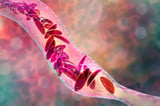Patient Death in CRISPR Sickle Cell Trial Sparks Safety Concerns Over Gene Editing Therapies
November 5, 2024
The cause of death was determined to be respiratory failure, likely linked to the chemotherapy regimen involving busulfan that was necessary prior to receiving the BEAM-101 treatment.
This incident occurred four months after the patient received the treatment, highlighting the potential risks associated with the pre-treatment regimen.
While the trial had previously shown promising early results, including significant production of fetal hemoglobin and a reduction of sickled hemoglobin, this death could overshadow those findings.
This incident underscores the risks associated with older chemotherapy drugs like busulfan, which are still used in conjunction with newer gene therapies.
Beam Therapeutics is now under increased scrutiny as the trial progresses, which could have implications for future gene editing therapies.
A patient with sickle cell disease died while participating in a clinical trial for Beam Therapeutics' CRISPR-based treatment, BEAM-101, raising significant safety concerns about gene editing therapies.
Beam has enrolled 35 patients in the expansion cohort of its Phase 1/2 study testing BEAM-101 and plans to present more data at the American Society of Hematology's annual meeting in December.
Despite the risks, Beam Therapeutics had previously announced successful results from its first clinical trial for a precision CRISPR gene editing medicine designed to treat sickle cell disease.
Beam's CEO acknowledged the inherent risks associated with myeloablative transplants using chemotherapy but emphasized the need to weigh these risks against the severe health threats posed by sickle cell disease.
The patient was one of six individuals treated in this groundbreaking trial, which focuses on a new form of CRISPR known as base editing.
The BEAM-101 treatment utilizes base editing to activate a gene in stem cells, leading to the production of more durable red blood cells.
The case highlights the inherent risks associated with one-time genetic therapies for blood disorders, which still rely on toxic chemotherapy agents from the mid-20th century.
Summary based on 4 sources
Get a daily email with more Science stories
Sources

STAT • Nov 5, 2024
Patient dies in Beam Therapeutics trial of CRISPR sickle cell treatment
STAT • Nov 5, 2024
Patient dies in Beam Therapeutics trial of CRISPR sickle cell treatment
BioPharma Dive • Nov 5, 2024
Sickle cell patient dies in Beam study of base editing therapy